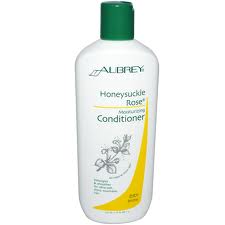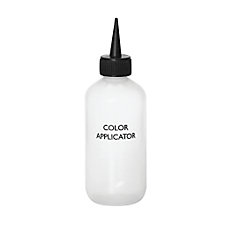So you want to start making your own skincare products but you don’t know where to start or what to buy? I’m here for you! In this post, I will discuss some essentials for your kit and some items that are nice but optional. By the end, you should have a basic shopping list started. The item links take you to my favorite products (free advertising so you know I must really like them).
This post has been a long time coming and it’s been a hot request in my email inbox (which is hippiebrowngirl@gmail.com). Let’s get started!
Basic Equipment
I refer to basic equipment in my intro to lotion making post but let’s reiterate here. You NEED:
- a stick blender Listen. Don’t get the cheap $10 one. You will be sorry. Trust me, I know from experience. Get a decent one, doesn’t have to be the most expensive option. I’ve been using this one for about 3 years now on a regular basis and it’s still in perfect working order. My favorite feature is that the stick is detachable so I can clean it easily and quickly without fear of electrocution.
- weighing and mixing containers I suggest mason jars because they’re cheap and easy to find but it doesn’t really matter as long as they’re heat-resistant (microwave-safe, can be placed into simmering water) and easy to clean. I go for glass over plastic because plastic holds smells and also because I don’t like plastic. Seriously – I don’t even own plastic tupperware, only Pyrex dishes.
- scale This isn’t a link to a specific scale. Get whichever one you’d like. I don’t have a preference although consider the batteries needed because they can be a pain to replace
Those are the pieces of equipment you absolutely need. The following items are nice to have but optional.
- glass mixing bowl Pyrex is good. You want to get a size that could fit comfortably on top of a pot so you can fashion a double boiler. This is also good for mixing if you like to make body butters that don’t require an emulsion (because they don’t contain water).
- disposable pipettes These come in handy when you put just a little too much of an ingredient into a container. They allow you to remove a gram or two at a time so you don’t exasperate yourself unnecessarily.
- glass pitcher I don’t have a preference for this either but make sure it has a handle. This is my favorite container for mixing because your stick blender stays immersed easily making for a smoother emulsion and little to no air bubbles. It’s easy to pour your lotion once mixed and it’s nice and tall so your stick blender will have no problems fitting.
- large metal spoon Stainless steel is best. This is good tool to have when your emulsion is acting weird or you’re getting bubbles. It’s also essential if you’re going to start making soap.
- silicone spatula To get allllll the lotion out
- electric mixer This is nice to have if you make body butters or if you like to whip your creams after emulsifying. That can be really luscious and velvety, especially for a foot or hand cream.
So that’s the hardware. How about the ingredients? Well, here is where it gets fun! But what’s fun for me might not be fun for you so feel free to substitute as you see fit.
Basic Ingredients
You NEED:
- distilled water – I didn’t link to this because I get it at the grocery store. It’s cheap. No, tap water will not do. No, boiled tap water will not do. No, filtered tap water will not do. DISTILLED WATER.
- antioxidant I use vitamin E oil
- emulsifier I recommend emulsifying wax NF because it’s virtually foolproof. (You can order it here too, same place as previous link, for the same price.)
- preservative Maybe it’s controversial to say you NEED this but once you really start making lotion, you’ll need a preservative.
- butters – I didn’t link to this because the choices are vast. I personally always have shea and mango butters on hand. Sometimes I have cocoa butter around, sometimes I have other, more exotic butters.
- oils – Again, I didn’t link here because there are so many. I just about always have the following oils: jojoba, avocado, camellia, castor, fractionated coconut, apricot kernel, sweet almond. But I also have others and I try new oils often. It’s really fun to try new oils. [Check out my post on picking oils & butters here]
So that’s what you must have. Now for the hard part. What’s nice to have but optional? I could write about 2,292 items on this list but I will restrain myself. I will give you the basic optional list. This is a starter guide. As you start to play, you will find your own way. Hey, that rhymes.
- humectant – Sorry, no link here either. I use raw honey or glycerin depending on what I’m making and I purchase both of those items from the grocery store.
- essential oils – There are seriously hundreds of options. The trick with essential oils is to do your (credible) research before you use them. The essential oils I always have (or try to always have) are: lavender, peppermint, spearmint, clove, geranium, ylang ylang, patchouli, rosemary. But there are so many, many other lovely options. Essential oils can be expensive, though, so don’t blow your whole budget on them and use them sparingly. They’re potent!
- conditioning emulsifier You can emulsify without this but it’s silky and smooth and I like it sometimes. I use it with emulsifying wax, not instead of it.
- thickener – I put this here because I know a lot of people like thickeners. I almost never use thickeners in skincare but I do occasionally use them in hair products, like conditioners. Stearic acid and cetyl alcohol are good ones.
- hydrosols Like essential oils, there are so many choices! I particularly love chamomile, calendula, cucumber for their wonderful healing properties. The citrus ones smell great. A little goes a long way here, don’t overdo it.
- aloe vera LIQUID Not gel. Use aloe vera liquid instead of or along with water for additional soothing and healing.
- beeswax – For when you need a heavier cream – think foot cream, heavy-duty hand cream.
Could you also get some silk amino acids? And maybe some panthenol? Possibly some fragrance oils? Of course, but when would I ever end this list? There are so many possibilities. That is the beauty of making your own products; it’s a wonderful combination of science and creativity. That’s why I love it!
What would you add to this list? Please drop suggestions in the comments.











